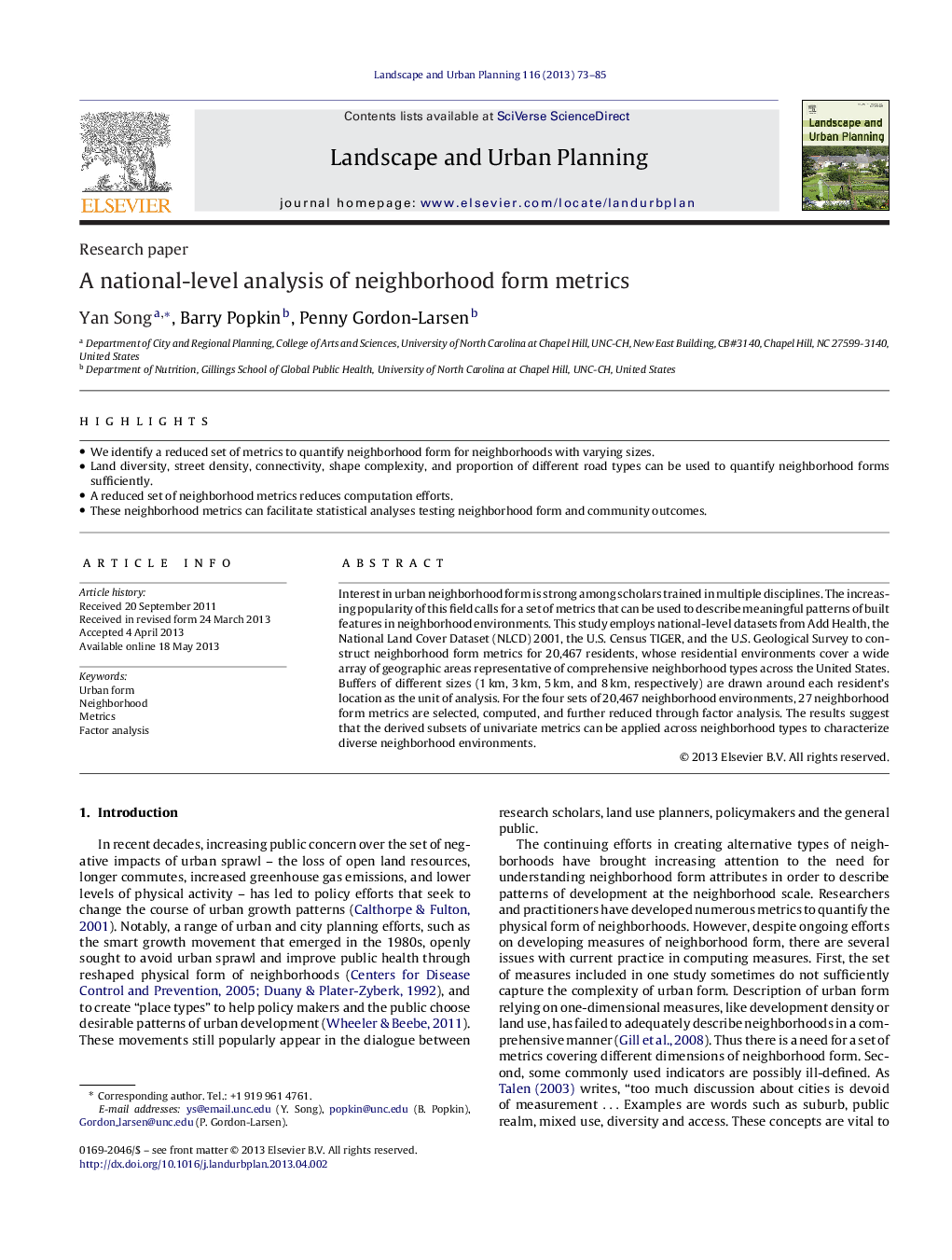| Article ID | Journal | Published Year | Pages | File Type |
|---|---|---|---|---|
| 1049301 | Landscape and Urban Planning | 2013 | 13 Pages |
Abstract
Interest in urban neighborhood form is strong among scholars trained in multiple disciplines. The increasing popularity of this field calls for a set of metrics that can be used to describe meaningful patterns of built features in neighborhood environments. This study employs national-level datasets from Add Health, the National Land Cover Dataset (NLCD) 2001, the U.S. Census TIGER, and the U.S. Geological Survey to construct neighborhood form metrics for 20,467 residents, whose residential environments cover a wide array of geographic areas representative of comprehensive neighborhood types across the United States. Buffers of different sizes (1Â km, 3Â km, 5Â km, and 8Â km, respectively) are drawn around each resident's location as the unit of analysis. For the four sets of 20,467 neighborhood environments, 27 neighborhood form metrics are selected, computed, and further reduced through factor analysis. The results suggest that the derived subsets of univariate metrics can be applied across neighborhood types to characterize diverse neighborhood environments.
Related Topics
Life Sciences
Agricultural and Biological Sciences
Ecology, Evolution, Behavior and Systematics
Authors
Yan Song, Barry Popkin, Penny Gordon-Larsen,
